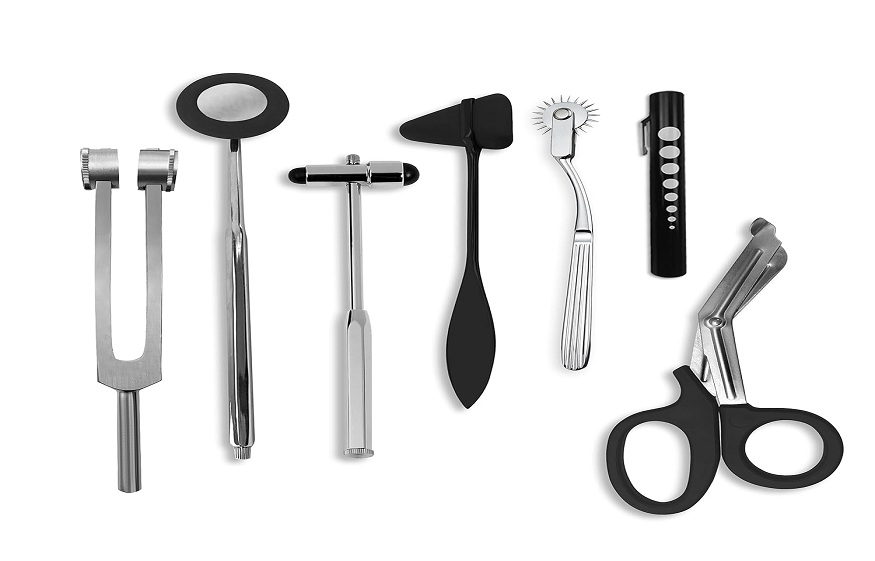
Understanding the Role of Neurological Tools in Early Stroke Detection
The importance of early stroke detection is for it to ensure better patient outcomes. In this regard, earlier detection means that intervention and treatment can be done on time. Indeed, most strokes are diagnosed with the aid of imaging and clinical symptoms. However, new advances in neurological tools are critical in making quick diagnoses easier. One tool that has been highlighted lately is the pupilometer tool to measure pupil responses, providing crucial information regarding the patient’s neurological status.
The Link Between the Pupillary Light Reflex and Stroke
The pupillary light reflex represents one of the body’s most universal responses to changes in light exposure. When light enters an eye, it causes the pupil to constrict as a natural protective mechanism to regulate light exposure to the retina. When this occurs due to a neurological cause, such as a stroke, this reflex can sometimes be disrupted. Understanding the disruption of this reflex can give healthcare professionals a clue about possible issues even before actual imaging is conducted.
Importance of Pupillary Assessment in Stroke Diagnosis
Pupillary assessment is a non-invasive, fast, and efficient way to determine neurological health. Neurologists and emergency medical personnel usually start by observing changes in pupils, particularly their reaction to light. A stroke may cause reduced blood flow to the brain, affecting the brainstem’s capacity to control pupillary responses.
This is the arena where neurological tools such as pupilometers come in. These measure changes in pupil diameter quite well. A normal pupillary response may be affected, whereby one pupil fails to construct fully or even remains dilated even in the presence of light. Such a measurement of a difference in pupil diameter that differs from the norm should signal a red flag, like a stroke or even any other neurological condition.
Pupil Diameter Measurement helps diagnose stroke
The autonomic nervous system is usually affected in the case of a stroke. The changes in the behavior of pupils can tell much about the patient’s condition since pupils are directly under the control of the brainstem. It is thus possible to keep track of the changes accurately by measurement performed with a pupilometer. The device records with precision how the pupil reacts to light; this might indicate the severity of the stroke or the underlying causes.
For instance, in an ischemic stroke, which is a blockage in the blood vessels supplying the brain, one pupil may be much larger than the other or may not constrict appropriately to light. This is because the neural pathways that control the pupillary light reflex are disrupted. By utilizing the pupillary evaluation method, healthcare professionals can quickly identify potential neurological deficits, enabling them to prioritize treatment and potentially save lives.
The Role of Technology in Enhancing Diagnostic Accuracy
Modern neurological tools have changed the approach to the detection of early stroke. For instance, pupilometers allow healthcare providers to make more accurate and timely diagnoses since they provide real-time data on how the pupils react to light exposure. The traditional method of pupil response assessment is highly subjective and sometimes may not be accurate or even inconsistent.
The pupilometer eliminates the vagueness associated with pupil size and response, providing quantified data. Such information can be highly valuable in emergency settings, where time is crucial. Coupled with other diagnostic tools and techniques, such as CT scans or MRIs, pupillary evaluation can add another layer of insight to improve the accuracy and speed of diagnosis, which helps medical teams provide swift and appropriate care.
Why Early Stroke Detection Matters?
Early detection of stroke is crucial because it has a great influence on the success of treatment. The sooner a stroke is detected, the sooner a patient can receive interventions such as clot-busting drugs or mechanical thrombectomy, both of which are time-sensitive therapies. Early diagnosis, assisted by sophisticated tools like the pupilometer, can significantly reduce the risk of long-term disability and even death.
The healthcare professional is now getting a new tool to measure pupil size for the assessment of neurological. The advancement in neurological tools enhances early detection of stroke, thereby advancing our understanding of how the body responds to neurological injuries.
Conclusion
The integration of neurological tools like the pupilometer in stroke detection protocols is revolutionizing the way healthcare professionals attend to patients. These tools offer invaluable insight into a patient’s neurological status. With such information, diagnoses could be made early and treatment taken in time. As such, technology will continue growing, and tools like this pupilometer will definitely be more important when it comes to early stroke detection, thereby improving patient outcomes and saving lives. The medical industry is taking giant leaps toward better stroke care if the healthcare industry relies on pupillary evaluation that is precise and objective.





